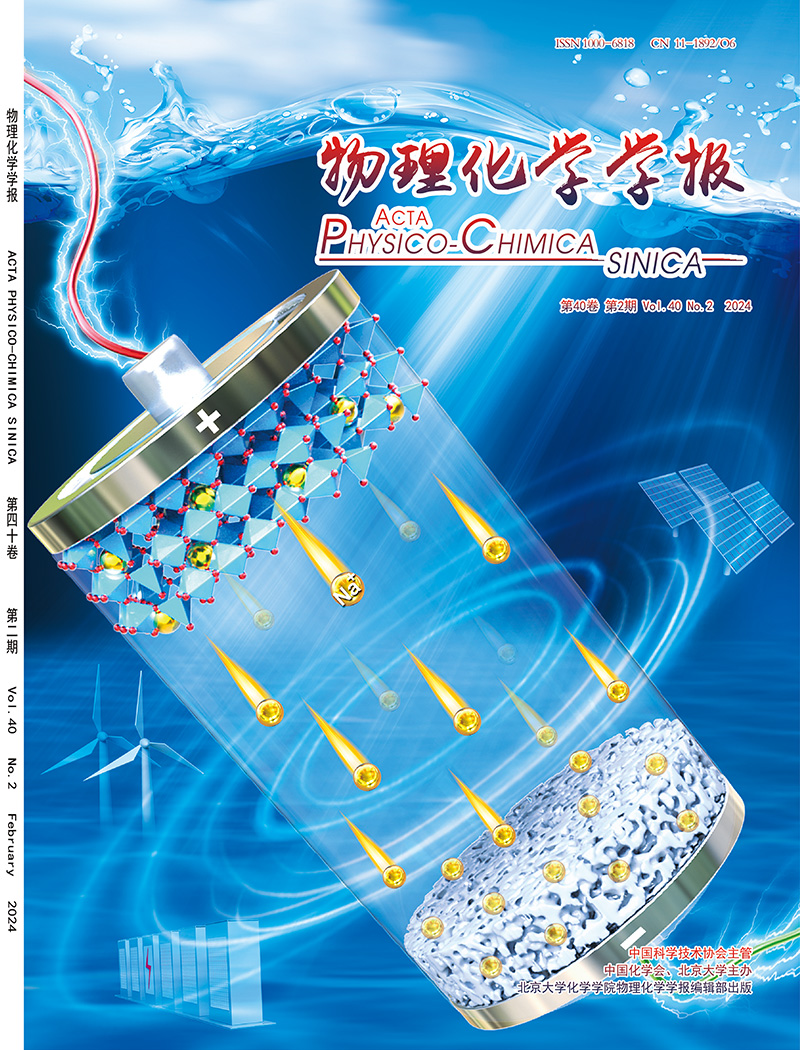Experimental and theoretical investigations of solvent polarity effect on ESIPT mechanism in 4′-N,N-diethylamino-3-hydroxybenzoflavone
IF 13.5
2区 化学
Q1 CHEMISTRY, PHYSICAL
引用次数: 0
Abstract
Excited-state intramolecular proton transfer (ESIPT) is a fundamental photoreaction of significant importance in both chemical and biological systems. This phenomenon typically occurs in chromophores featuring intramolecular hydrogen bonding. Among the molecules undergoing ESIPT, 3-hydroxyflavone derivatives (3-HFs) have garnered significant attention due to their natural origins and environmentally responsive fluorescence properties. A particular 3-HF compound, 4′-N,N-diethylamino-3-hydroxybenzoflavone (D-HBF), distinguished by its extended π-system and red-shifted electronic absorption, has recently been identified as a potent fluorescent probe highly sensitive to changes in environmental polarity. In this study, we systematically explored the ESIPT reaction mechanism of D-HBF in three aprotic solvents: cyclohexane, diethyl ether, and tetrahydrofuran, each possessing varying polarities. Our investigation involved a combination of spectroscopic and theoretical methods. In all three solvents, we observed the characteristic dual emission bands associated with ESIPT, with the intensity ratio of these bands being influenced by the solvent. As solvent polarity increased, we noted a decrease in the rates of both the forward and reverse proton transfer (PT) reactions based on our analysis of fluorescent kinetics. However, the reverse PT was favored. Through density functional theory (DFT) and time-dependent DFT (TD-DFT) calculations of bond lengths and bond angles of the intramolecular hydrogen bond in these solvents, we confirmed that the ESIPT reaction in D-HBF is driven by the strengthening of the excited-state hydrogen bond. Notably, upon increasing solvent polarity, the intramolecular hydrogen bonds in the excited N∗ state weakened, as evidenced by the up-shifted IR absorption frequency of the O–H stretching mode in the S1 state. Electron intensity analysis of frontier orbitals revealed characteristic intramolecular charge transfer (ICT) occurring in D-HBF upon photoexcitation, attributable to the introduction of a strong electron-donating group at the 4′ position (4′-N,N-diethylamino-). Calculations of potential energy curves for the S0 and S1 states confirmed that the PT process tends to occur in the S1 state rather than the S0 state, and a more polar solvent generates a more significant potential barrier, hindering the corresponding ESIPT reaction. An analysis of the Gibbs free energy of ESIPT further confirmed that increasing solvent polarity favors the equilibrium shifting toward the N∗ state. This research lays the foundation for potential future applications of D-HBF as a biological fluorescent probe sensitive to environmental polarity.

溶剂极性对4′-N, n -二乙胺-3-羟基苯黄酮ESIPT机理影响的实验和理论研究
激发态分子内质子转移(ESIPT)是一种基本的光反应,在化学和生物系统中都具有重要意义。这种现象通常发生在具有分子内氢键的发色团中。在进行ESIPT的分子中,3-羟基黄酮衍生物(3-HFs)由于其天然来源和环境响应荧光特性而引起了极大的关注。一种特殊的3-HF化合物,4 ' -N, n -二乙基氨基-3-羟基苯黄酮(D-HBF),以其扩展π体系和红移电子吸收为特征,最近被确定为一种对环境极性变化高度敏感的有效荧光探针。本研究系统探讨了D-HBF在三种极性不同的非质子溶剂环己烷、乙醚和四氢呋喃中的ESIPT反应机理。我们的研究结合了光谱学和理论方法。在所有三种溶剂中,我们观察到与ESIPT相关的特征性双发射带,这些波段的强度比受溶剂的影响。随着溶剂极性的增加,根据荧光动力学分析,我们注意到正向和反向质子转移(PT)反应的速率降低。然而,相反的PT更受青睐。通过密度泛函理论(DFT)和时间依赖DFT (TD-DFT)计算这些溶剂中分子内氢键的键长和键角,我们证实了D-HBF中的ESIPT反应是由激发态氢键的强化驱动的。值得注意的是,随着溶剂极性的增加,激发态N *的分子内氢键减弱,正如S1态O-H伸展模式的红外吸收频率上移所证明的那样。前沿轨道的电子强度分析揭示了D-HBF在光激发下发生的特征性分子内电荷转移(ICT),这是由于在4 ‘位置引入了一个强给电子基团(4 ’ - n, N-diethylamino-)。对S0和S1态势能曲线的计算证实,PT过程更倾向于发生在S1态而不是S0态,极性越强的溶剂产生的势垒越显著,阻碍了相应的ESIPT反应。对ESIPT的吉布斯自由能的分析进一步证实了溶剂极性的增加有利于平衡向N *态转移。本研究为D-HBF作为环境极性敏感的生物荧光探针的潜在应用奠定了基础。
本文章由计算机程序翻译,如有差异,请以英文原文为准。
求助全文
约1分钟内获得全文
求助全文

 求助内容:
求助内容: 应助结果提醒方式:
应助结果提醒方式:


